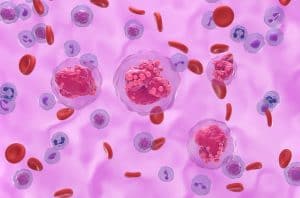NICE bypassed in radical innovation boost
pharmafile | July 16, 2009 | News story | Research and Development, Sales and Marketing | ABPI, Blueprint, NICE, hta
Ministers have sidestepped NICE in their bid to boost innovation in life sciences, and said certain medicines can made available on the NHS before the Institute appraises them.
The landmark move, developed with the interests of the industry at heart, was laid out in the new ‘Blueprint’ from the new government Office of Life Sciences.
Outlined by new minister Lord Drayson, formerly head of a biotech company, the Blueprint marks a reversal in the balance of power – giving companies a higher chance of seeing their new medicines established in the NHS and doing away with so-called ‘NICE blight’.
A change of tack for NICE
Lord Drayson and Lord Darzi launched the Blueprint, which aims to support the UK life sciences sector and put innovation at the heart of the NHS, earlier this week at London’s Imperial College.
Lord Drayson set up vaccines company PowderJect in the 1990s and has been working as Minister for Science and Innovation since January in a specially created Office of Life Sciences (OLS).
The OLS’ resulting report comes from a business perspective, as was anticipated with Drayson’s appointment.
But less expected were its key proposals to overhaul NICE and the NHS in the name of industry progress; fundamentally changing the way medicines are currently used in the UK.
It recommends that technologies considered innovative can bypass a NICE appraisal for a time and be approved for NHS use immediately.
This ‘Innovation Pass’ would last for three years, after which time the drug would be referred to NICE, giving companies time to generate evidence of products’ value to patients and the health service.
The new system is planned for launch with a one-year pilot phase starting in 2010/11, and will have a dedicated budget of £25 million from the Department of Health.
If it proves successful, the scheme would allow products two further years to prove themselves on the market as well as further dedicated funding to pay for their uptake.
The plan still lacks much detail and is to be consulted on this autumn, which will help define some of the most important questions about how it will operate.
Most significant will be just how innovative a technology will have to be, to be considered for an Innovation Pass, how many medicines this could apply to each year, and exactly how the drugs may be funded.
Cut out of the picture
So far, its seems NICE could still be involved in setting the criteria for which drugs qualify for an Innovation Pass, though it will not oversee the initiative’s budget.
But the role of the cost-effectiveness body has seemingly been intentionally downgraded as part of the new plan.
The Institute was cut out of the weekly meetings held by the OLS over the last six months, even though industry members and government departments were free to contribute.
Moreover, NICE was not represented on the panel alongside the ministers and other speakers at the launch of the Blueprint, despite being at the core of the new plans.
Instead, representatives from pharma, academia, and the NHS were given the floor.
Chief executive Andrew Dillon was absent from the meeting, and said only that securing a successful future for life sciences industries is important for patients and the economy, and NICE will continue its discussions on the new plan.
He added: “The Innovation Pass is an opportunity for data to be gathered on potentially important new treatments. NICE has been involved in discussions about the innovation pass, and we are looking forward to continuing to play a key role in developing the pass.”
Criticism
Critics are likely to say the proposal threatens to undermine NICE by allowing costly drugs onto the NHS that offer little health benefit.
But Dr Richard Barker, director general of the ABPI, said the idea will be trialled in a controlled environment, and the amounts of money discussed at the moment are modest.
“It’s hard to believe NICE will be writing anyone blank cheques, and it’s not a license for companies to print money.”
At the launch, Lord Drayson was braced for criticism over the plans for NICE, insisting several times they were to be carried out with help from, and not independently of, the cost-effectiveness body.
Nevertheless, the scale of the power shift from NICE to the industry will become clearer following the consultation on the proposals later this year.
Related Content

NICE recommends migraine treatment for NHS use
The National Institute for Health and Care Excellence (NICE) has shared draft guidance recommending AbbVie’s …

GSK’s Jemperli recommended by NICE for endometrial cancer treatment
GSK has announced that the National Institute for Health and Care Excellence (NICE) has recommended …

NICE recommends SC treatment of AbbVie’s Tepkinly for patients with DLBCL
AbbVie has announced that the National Institute for Health and Care Excellence (NICE) has recommended …








